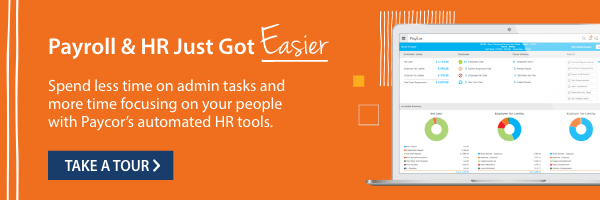As the price of health care increases, health savings accounts (HSAs) and health reimbursement accounts (HRAs) are becoming more and more popular. While these benefits are great recruitment and retention tools, they both require following certain regulations to be compliant.
Not sure what type of account is the best option for your workforce? Read on for an in-depth HSA vs. HRA comparison, including pros and cons for each option.
What Is an HSA?
An HSA is a tax savings benefit where employees elect to deduct part of their pre-tax salary into a protected savings account. Then, they can use those funds to pay for certain approved medical expenses. Typically, HSA funds can pay for vision and dental care, prescriptions, copays, and deductibles. HSAs must be paired with high deductible health plans (HDHPs).
HSA Pros
- Lower payroll taxes: HSA contributions are tax-exempt. You won’t pay any payroll taxes on the money you deposit in an employee’s health savings account.
- Lower overall tax burden: Because these are considered pre-tax contributions, they lower your overall federal tax burden.
- Higher retention rates: Businesses with strong health care benefits have 27% lower turnover rates (Business Wire).
HSA Cons
- Restricted to HDHPs: HSAs are only available to employees enrolled in high deductible health plans.
- Limited to medical use: Funds can only be used for qualified medical expenses. Non-medical withdrawals are subject to taxes and penalties before age 65, which may reduce the perceived value of the benefit.
- Complex documentation: Offering an HSA requires filing several additional tax forms, typically including Form 5498-SA, Form 8889, and including relevant information on Form W-2. Because the tax code changes regularly, it’s important to stay up to date about these requirements.

Curious about the difference between FSAs and HSAs? Get the facts in this article: HSA vs FSA: Which is Best for Your Employees?
Employer Contributions
Employers can contribute to HSAs in one of two ways: either with or without a Section 125 plan.
An IRS Section 125 plan is sometimes called a “cafeteria plan.” These programs have menus of benefits that employees can choose from, the same way you’d choose items at a cafeteria. HSAs are a common option under cafeteria plans. These plans can also include:
- Life insurance
- Certain health benefits
- Adoption assistance
- Dependent care assistance
- Accident benefits
Several benefits are not allowed under cafeteria plans, like employee discounts and educational assistance. Before offering a Section 125 plan, make sure you know exactly which benefits you can include.
You can also offer an HSA as a separate benefit, even without offering a cafeteria plan. In that case, you can decide whether to contribute to the HSA and how to schedule your contributions. Employers can contribute to HSAs on one of three schedules:
- In a lump sum at the start of the year
- With smaller deposits each pay period
- In a hybrid approach, depositing 40-50% of the full amount in a lump sum and then making smaller contributions with each pay period
If your HSA is part of a cafeteria plan, you might not get to choose between these options. Instead, you may have to follow stricter state or federal regulations about the size and frequency of your contributions.
If you contribute a lump sum at the start of the year, you’ll save time and money on admin. But this isn’t necessarily the best option. It’s important to remember that HSAs are transferrable. In other words, if an employee leaves your company, they’ll keep all the funds in the account. If you’re concerned about turnover, monthly contributions are a less risky strategy.
In some cases, you can also contribute to an HSA on a longer timeline, making deposits quarterly or twice a year. This reduces the administrative burden, but still protects you from employees who quit right after getting the lump sum.
HSAs have annual contribution limits. In 2025, the maximum contribution for self-coverage is $4,300 annually. The maximum contribution for family coverage (for employees with dependents) is $8,550 annually.
These limits refer to the total amount that goes into the account, including HSA employer contributions and employee contributions.
What Is an HRA?
An HRA is an employer-funded benefit designed to reimburse employees for qualified medical expenses. Only the employer can contribute to an HRA. An HRA can be offered alongside health insurance or as a standalone benefit.
There are several types of HRAs, including:
- Standard HRA: Offered in conjunction with a group plan to reimburse for out-of-pocket medical expenses.
- Individual Coverage HRA (ICHRA): Employees must purchase individual health insurance, and employers contribute fixed amount for reimbursement per month.
- Qualified Small Employer HRA (QSEHRA): Offered by businesses with fewer than 50 employees to help employees pay for health care expenses.
HRA Pros
- Lower payroll taxes: Contributions are tax-exempt, reducing the employer’s overall tax burden.
- Flexibility: HRAs offer employees more flexibility in choosing their health coverage.
- Potential cost savings: HRAs can help employees save money on out-of-pocket medical expenses.
HRA Cons
- Reliant on employer contributions: Doesn’t give employees a way to save for medical expenses, as only employers can contribute.
- Limited options: Some HRA types are only available to certain employers. For example, you can only offer a QSEHRA if you employ less than 50 people.
- Administrative burden: From regulation compliance to handling reimbursements, managing an HRA can be complex and time-consuming.
Employer Contributions
There are various options for structuring employer contributions to an HRA, depending on the the account type. Standard HRAs are typically paired with group health plans, and employers have flexibility in determining how much to contribute and what expenses will be reimbursed. The employer controls the funding limits and can decide to roll over unused amounts at the end of the year. Contributions are tax-deductible for employers, offering a financial incentive to provide this benefit.
An ICHRA allows employers to reimburse employees for individual insurance premiums and medical expenses. QSEHRAs are similar, but are only available to companies with fewer than 50 employees and have contribution caps. In 2025, those amounts were $6,350 for a single employee’s coverage and $12,800 for family coverage.
Differences Between HSA and HRA
There are several differences between an HSA and HRA, including portability, funding, and eligibility. The following table provides an overview of the differences.
| Feature | HRA | HSA |
| Who Can Contribute | Employer only | Employer and employee |
| Ownership | Employer-owned | Employee-owned |
| Eligibility | Available with or without a health plan, depending on the type of HRA | Must be paired with a high deductible health plan (HDHP) |
| Fund Rollover | Employer decides if unused funds roll over | Funds automatically roll over year to year |
| Portability | Not portable (funds typically remain with the employer if employee leaves) | Fully portable (employee keeps the funds even after leaving the company) |
| Contribution Limits | ICHRA has no limit. QSEHRA contribution limits for 2024 were $6,150 for single employee and $12,450 for family coverage. | In 2025, the maximum contributions are $4,300 for self-coverage and $8,550 annually. |
| Tax Benefits | Employer contributions are tax-deductible | Contributions are tax-free, and funds grow tax-free |
Stay Compliant with Paycor
Whether you offer an HRA or HSA, it can be hard to stay compliant. A small mistake on required forms can lead to steep fines and serious tax issues. HR teams need a reliable system for tracking the details, every step of the way. Paycor’s benefits administration solutions can streamline your HCM processes. With the right tools you can offer complex benefits packages, tailored to your workforce, and stay on top of compliance. Automate tedious administrative tasks so you can focus on what’s most important: supporting your employees with the right mix of benefits. Take a guided tour today.

Frequently Asked Questions
Still have questions about an HRA vs HSA? Read on.
What Are the Eligibility Criteria for Opening an HRA and an HSA?
An HSA must be paired with a high deductible health plan, and plan recipients can’t be claimed as dependents or enrolled in Medicare. HRAs depend on the type. An Individual Coverage HRA requires the employee to obtain individual health insurance. A Qualified Small Employer HRA can only be offered by employers of less than 50 employees, but doesn’t require offering group health insurance.
What Are the Tax Advantages Associated with HRAs and HSAs?
Employer contributions to an HRA are tax deductible. Employer and employee HSA contributions are tax-free and grow tax-free.
How Are HRAs and HSAs Funded?
Only employers can contribute to HRAs. Employers and employees can contribute to HSAs.
What Medical Expenses are Covered by HRAs and HSAs?
Both HRAs and HSAs cover qualified medical expenses, including doctor visits, prescriptions, vision, dental care, copays, and deductibles.
What Are the Withdrawal Rules for HRAs and HSAs?
With an HRA, employees can only be reimbursed for qualified medical expenses. For an HSA, withdrawals for qualified medical expenses










